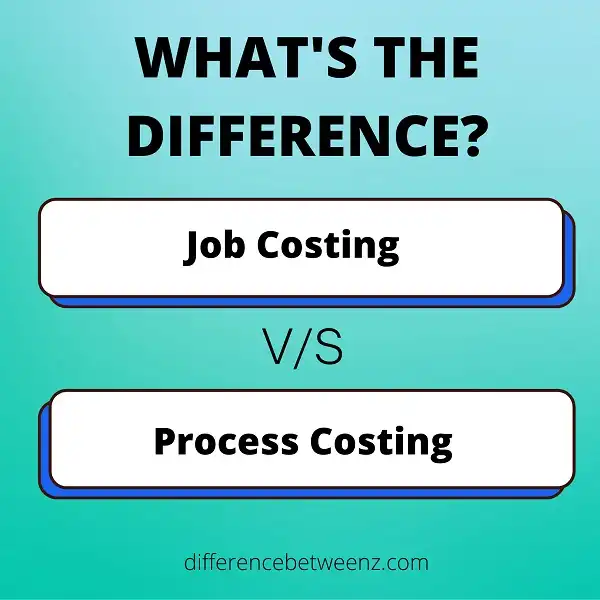Job costing and process costing are two different methods organizations use to track the cost of producing a product or service. Both methods have their own advantages and disadvantages, so it is important to understand the differences before deciding which one is best for your business. In this blog post, we will explore the key differences between job costing and process costing. By understanding these differences, you can make an informed decision about which method is right for your organization.
What is Job Costing?
Job costing is a method of allocating indirect costs to individual products or services. The purpose of job costing is to accurately assign overhead expenses so that each product or service has an accurate cost associated with it. Job costing is commonly used in manufacturing, construction, and other businesses where products or services are produced in batches or on a project basis. In order to properly allocate indirect costs, businesses need to track the direct costs associated with each job.
Direct costs can include materials, labor, and other expenses that can be easily traced to a specific job. Once the direct costs have been tracked, businesses can then allocate indirect costs based on the proportion of direct costs incurred for each job. Job costing can be a complex process, but it is essential for businesses that need to accurately track the cost of their products or services.
What is Process Costing?
- Process costing is a method of accounting that is used to assign production costs to individual products or services. This approach is often used in manufacturing and other industries where large numbers of similar products are produced. Process costing involves tracing the cost of raw materials and direct labor associated with each production process.
- These costs are then allocated to each unit of output based on the number of units produced. Process costing can be contrasted with job order costing, which assigns production costs to specific jobs or batches of products. While process costing is geared towards mass production, job order costing is more suitable for businesses that produce custom or one-of-a-kind products.
- Process costing is an important tool for managers, as it provides insight into the cost of producing goods and services. With this information, managers can make more informed decisions about pricing, product mix, and other strategic issues. Process costing also makes it possible to track efficiency and productivity over time, allowing businesses to identify areas in need of improvement.
Difference between Job Costing and Process Costing
Job Costing and Process Costing are two methods of calculating the cost of manufacturing a product. Job Costing is typically used when products are made to order, and Process Costing is used when products are mass-produced. Job Costing assigns costs to specific jobs, while Process Costing assigns costs to individual processes. Job Costing is more accurate, but it is also more time-consuming and expensive. Process Costing is less accurate, but it is faster and cheaper. Ultimately, the decision of which method to use depends on the needs of the business.
Conclusion
Job costing and process costing are two different methods of accounting for the costs of producing a product. The major difference between the two is that job costing assigns specific costs to each individual job, while process costing assigns costs to broad production processes. Both methods have their pros and cons, so it’s important to understand which one will work best for your business.


